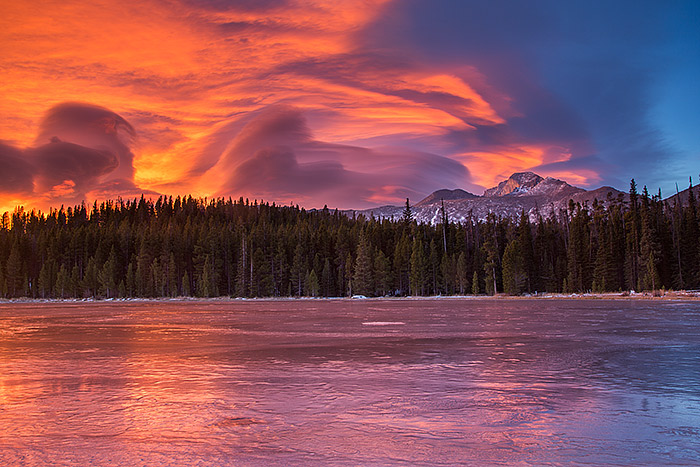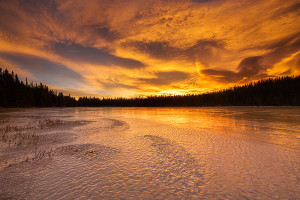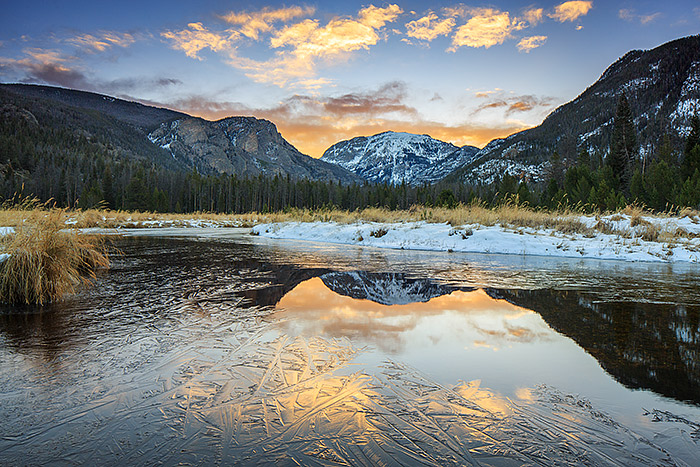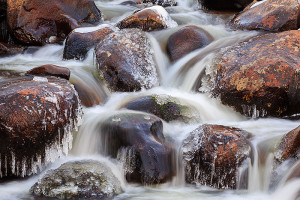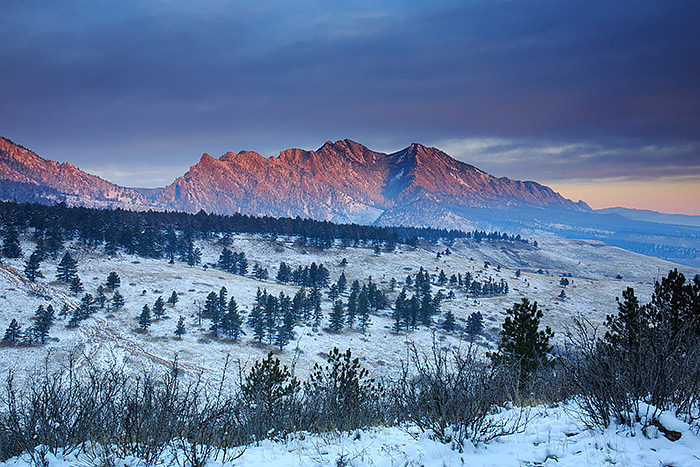
After a week of chilly, cold and snowy weather, It was time to get out on the trail and see what subjects I could find to photograph. Some snow still clung to the pines along the flanks of the Flatirons and the sky above was filled with clouds.
Standard operating procedure on a morning like this is to take the dog out for a walk while scanning the eastern plains for breaks in the cloud cover. While walking the dog I can usually get a pretty good idea if there are breaks in the cloud cover over the eastern plains which might allow for some spectacular early morning drop under lighting.
Conditions were not looking all that promising when I scanned the horizon. The cloud were increasing and most of the eastern horizon appeared to be shrouded in clouds. Even so, I could make out a break or two in the dark skies or as we photographers like to call them ‘sucker holes’. Small breaks in the cloud cover are known as ‘sucker holes’ for their propensity to sucker you into thinking you are going to get some epic drop under light only to be left standing in the cold when the clouds block sunrise and the light fails to materialize.
I learned a long time ago that while it helps to assess and adapt to the conditions when photographing, not making excuses and being in the best position possible regardless of what you think may happen is the best policy for success. So with that I mind, I was going to head out regardless of how unlikely it appeared that the lighting would cooperate.
As is always the case, the minute I hit the trail and start hiking, the pretenses start to fade away and experience and thrill of being out in nature alone in the predawn hours quickly takes hold. Capturing the light is now secondary to the experience of the sights and sounds of the natural world.
Forty minutes later I arrive at my destination. I’m pre-occupied, enjoying the hike in so as not to be paying much attention to the skies over the eastern plains. I know there are plenty of clouds in the skies this morning as the snow covered landscape around me is draped in blue light prevalent in the pre-dawn hours. Trees now block my view to the east preventing a good assessment of whether or not I’ll have any drop under light.
I take off my pack, setup my tripod and camera and wait under the cool blue pre-dawn light. Shortly before sunrise the clouds over the Flatirons begin to take on a slight magenta hue which quickly begins to intensify. Soon the top of the Flatirons joins in and turns red amongst the backdrop of a cool, snow covered landscape. For a few short minutes the sky and the mountains standout against the backdrop of the blue shadows. As I release the shutter and photograph the magnificent scene before me I can only chuckle to myself that I would have even considered missing this opportunity.


